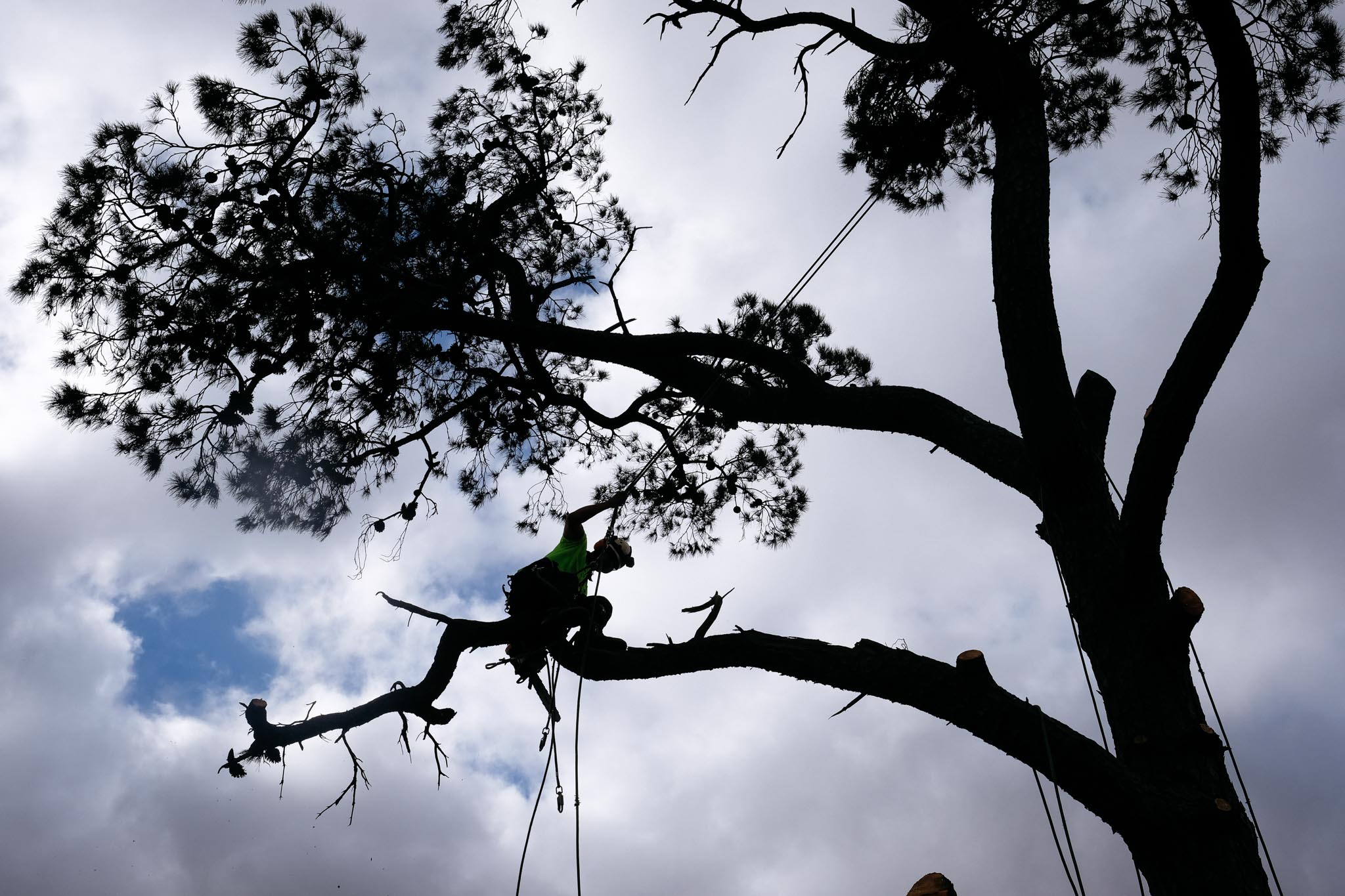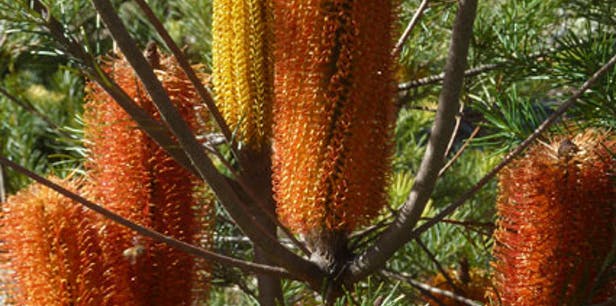Before you think about removing a tree in the Knox City Council region make sure you have familiarised yourself with the local rules and regulations, for the planning controls implemented to protect vegetation and trees are enforced and the penalties for violating these controls can be harsh.
If you aren’t quite sure whether your suburb falls under the jurisdiction of the Knox City Council, their rules and regulations encompass the following areas:
- Bayswater
- Boronia
- Ferntree Gully
- Knoxfield
- Lysterfield
- Rowville
- Scoresby
- The Basin
- Upper Ferntree Gully
- Wantirna
- Wantirna South
With over 70,000 trees lining the streets of Knox City’s leafy green suburbs, it’s no wonder the local Council regard street trees as one of the region’s greatest assets. The retention and planting of canopy trees is central to the mission of the Council’s ‘Tree Asset Management Plan’, as such the process of pruning, lopping or removing a tree is subject to Council approval.
Knox Council Tree Removal Laws
Unlike many other Council regions, the Knox Council does not outline a clear set of guidelines or restrictions for the removal and pruning of trees in the area. Instead, in order to find out which controls and restrictions apply to your property you will need to submit a Planning Property Report, found here.
To get approval for removing or pruning a tree you must then apply for a Planning Permit. These can be lodged in person at the Council offices, or online here. To submit the application online or register for the online services on the Knox City Council website, you must be a Registered User.
For help completing this report, the Knox City Council website offers a Planning Services Checklist which provides examples, contact information and all of the information you need to include in your Planning Property Report.
Removing a Tree: What to Expect
Malcolm, a local Arborist and Jim’s Franchisee in the Knox City region, says that complete tree removals account for about 80% of the jobs he receives.
“You’re removing dead, sick or problem trees, or trees that have outgrown their purpose. So you’re removing them either by climbing them, dismantling them and rigging them down, or removing them by straight up felling them.”
If you were hoping to get an idea of the average time and cost of removing a tree then Malcolm has some bad news for you, “it varies.”

The time and costs of a tree removal job are based on much more than just the tree type. Factors like size and volume are obviously important, but so too are the location, surrounding hazards and even the time of year.
“Every single job has to be priced based on its merits, a tree in the backyard where it can just be roped and felled is going to be cheaper than a tree in the front yard with five service lines underneath it and powerlines where we’re going to have to get a cherry picker in and dismantle it branch by branch,” says Malcolm.
While there are many influencing factors on the cost of tree removal, Malcolm has some advice for those looking to save:
“Summer is a busier time for tree crews and prices tend to be higher. Definitely Autumn is the best time to do it if you’re removing a Deciduous tree, obviously it’s a lot easier to drag branches when they’re not full of leaf. Autumn or Winter would be a time when the industry is quieter and you might be able to save a bit of money.”
Why Remove a Tree?
Safety
When a tree has been assessed to be dangerous, the chance of falling limbs or a complete collapse of the trunk poses a risk to residents of nearby properties, passing pedestrians, traffic and even local wildlife. As such, regular pruning and removal of trees are an important part of the safety of the community.
One of the leading causes of falling trees are storms, says Malcolm:
“When we have storms preceded by heavy rain that softens the soil and then some decent wind, the tree can just tip over. So once the soil has been loosened up by rain, that’s what you’ll find. So around July, August, September we start to get heavy rain and wind and suddenly trees start falling over, it could even be perfectly healthy trees.”
The boundary lines between properties is another factor that can lead to a tree becoming dangerous. This is of particular importance to trees that grow in groves. In many situations groups of trees become interlinked in their root systems, relying on each other for stability and protection from the wind says Malcolm:
“…all of a sudden someone removes one tree because it’s on their property and then the other trees are exposed. Trees don’t understand that one property is different from another, they’re all just together. That’s where you’ve got to educate people about preserving trees.”
Saving money
Beyond safety reasons, overhanging branches can cause all sorts of problems as they shed their leaves. As a Deciduous Tree overhangs a roof it can cause a nightmare for the gutters and drains of a home. Continually blocking the gutters with leaves can lead to structural damage, while regular cleaning and maintenance fees for your roof gutters can add up fast. For some properties, the cost of a one-time tree removal for a problematic or overhanging tree can end up saving you money in the long run.
Development
Outside of safety reasons, building and development is a leading cause of tree removal. Trees blocking extensions to houses and other residential developments often provide no other avenue beyond a complete removal. Our Arborists encourage anyone thinking of removing a tree for development to check on the Knox Council website to see whether they meet the requirements for a Planning Permit.
Alternatives to Removing a Tree
There is a very good reason that tree removals take up 80% of the jobs done by Malcolm in the Knox City region, it’s important work. Whether a tree poses a risk to a community through sick or damaged roots, or the tree stands in the way of essential development and construction, there are plenty of worthy reasons to give your local Jim’s Trees a call. Cutting a tree down however, should not be your first option.
Malcolm, a self-proclaimed tree-hugger, is always cautious about removing trees:
“I’ll always encourage people to retain trees if they’re healthy, good specimens or worth keeping. I always try to remove the tree as the last option because you can never get it back. It sounds like I’m a tree hugger, and I am. I love trees and think we need to keep as many as we can.”
Before thinking about a removal, Malcolm likes to talk with customers about the other possible options, like tree bracing:
“Roping it up and bracing it so that if branches fail they stay caught in the ropes and we can come back and fix it up for them is a great alternative to removing a tree which can make the property hot, increase the air-conditioning bill, the power bill and change the whole aesthetic of the property.”
As simple as it sounds, often the best way to ensure the health and safety of a tree is to take preventative measures in the form of regular pruning:
“If you take a kilo of leaf off the tip of a branch it might alleviate 20kgs at the union where it joins the trunk, so you can ease the pressure on branches by taking the weight off them.”
No Cutting Corners: Jim’s Approach
For all of our Arborists, safety is the number one priority. Ensuring the safety of all staff, clients and pedestrians is at the forefront of each and every job. Before starting any job, a Job Safety Analysis (JSA) is taken to check for all potential hazards of the tree and its surrounds. All staff onsite then participate in a Toolbox Meeting to discuss the best and safest procedure for that individual tree, says Malcolm.
“That’s the first thing we learn through training with Jim’s, how to keep ourselves, our staff and the public safe. That’s why we take extreme precautions, JSA before every job, every necessary precaution is taken for every single job. Looking after everyone so everyone gets to go home at the end of the day.”
The training provided to all our staff is designed to ensure the highest quality and safety is met.
To Malcolm it is this reputation that keeps him motivated to ensure the highest safety requirements are met for every job:
“We have a national brand that we have to protect. We’re all in it together, every franchisee has to be on their best game, one bad thing reflects badly on the whole group. It’s a highly risky job, that’s why we need to take all precautions that we can.”
Common tree types
- Acacia implexa (Lightwood)
- Acacia linearfolia (Wattle)
- Allocasuarina littoralis (Black Sheoak)
- Angophora floribunda (Rough-barked Apple)
- Angophora hispida (Dwarf Apple)
- Banksia ‘Giant Candles’
- Brachychiton acerifolius (Illawarra Flame Tree)
- Brachychiton populneus (Karrajong Tree)
- Celtis australis (European Nettle Tree)
- Cercis canadensis (Forest Pansy)
- Cinnamomum camphora (Camphor Laurel)
- Corymbia citriodora ‘Scentuous’ (Dwarf Lemon Scented Gum)
- Corymbia eximia ‘nana’ (Dwarf Yellow Bloodwood)
- Corymbia ficifolia cv (Flowering Gum)
- Elaeocarpus reticulatus (Blueberry Ash)
- Eucalyptus cephalocarpa (Silver-leaved Stringybark)
- Eucalyptus cinerea (Argyle Apple)
- Eucalyptus leucoxylon (Yellow Gum)
- Eucalyptus mannifera ‘Little Spotty’ (Brittle Gum)
- Eucalyptus melliodora (Yellow Box)
- Eucalyptus pauciflora ‘Little Snowman’ (Snow Gum)
- Eucalyptus polyanthemos (Redbox)
- Eucalyptus radiata (Narrow Leaved Peppermint)
- Eucalyptus torquata (Coral Gum)
- Fraxinus pennsylvanica cv (Green Ash)
- Geijera parviflora (Wilga)
- Hakea bucculenta (Red Pokers)
- Jacaranda mimosifolia (Jacaranda)
- Koelreuteria paniculata (Golden Rain Tree)
- Kunzea ericoides (White Tea Tree)
- Lagerstroemia indica cv (Crepe Myrtle)
- Leptospermum petersonii (Lemon Scented Tea Tree)
- Liriodendron tulipifera (Tulip Tree)
- Lophostemon confertus (Qld Brush Box)
- Malus floribunda (Crab Apple)
- Malus ioensis ‘Plena’ (Bechtel Crab Apple)
- Melaleuca linariifolia (Snow in Summer)
- Melaleuca quinquenervia (Broad-leaved Paperbark)
- Nyssa sylvatica (Tupela)
- Parrotia persica (Persian Ironwood)
- Photinia x fraseri ‘Robusta’ (Red Leaf Photinia)
- Pistachio chinensis (Chinese Pistachio)
- Pittosporum crassifolium (Karo)
- Pyrus calleryana ‘Capital’ (Columnar Ornanmenta Pear)
- Pyrus calleryana ‘Cleveland Select’ (Ornamental Pear)
- Pyrus nivalis (Snow Pear)
- Quercus acutissima (Sawtooth Oak)
- Syzygium australe (Brush Cherry)
- Syzygium floribunda cv (Weeping Lilly Pilly)
- Tilia cordata ‘Green Spire’ (Small-leaved Lime)
- Tristaniopsis laurina ‘Luscious’ (Kanooka)
- Ulmus Parvifolia cv (Chinese Elm)
- Zelkova serrata (Japanese Zelkova)

Cutting to the Chase
Removing a tree in the Knox Council region can be a complicated process to navigate, constantly changing rules on top of all the safety and financial factors you need to consider is enough to leave anyone confused.
No more waiting around for a tree service to call you back, no more wondering whether you’ll have all the right permissions and equipment, no more cleaning up the mess after the tree is down, we have you covered.
Give us a call today.
[jims_author_box av_uid=’av-3akmvi’]

